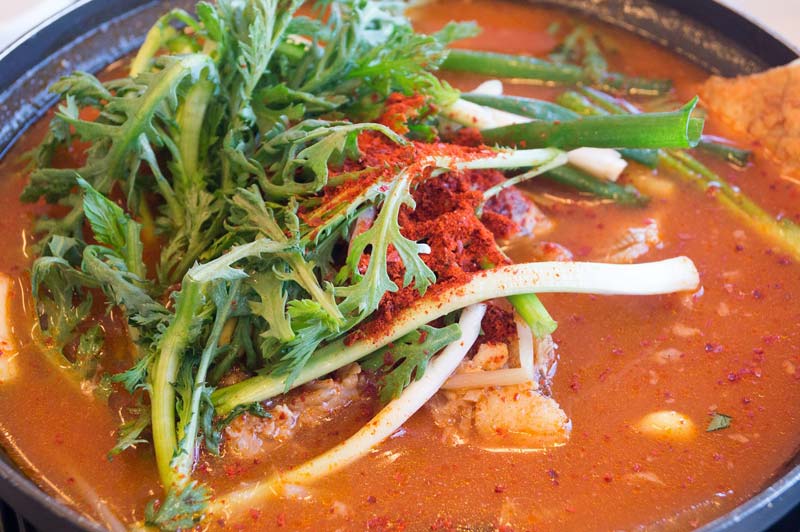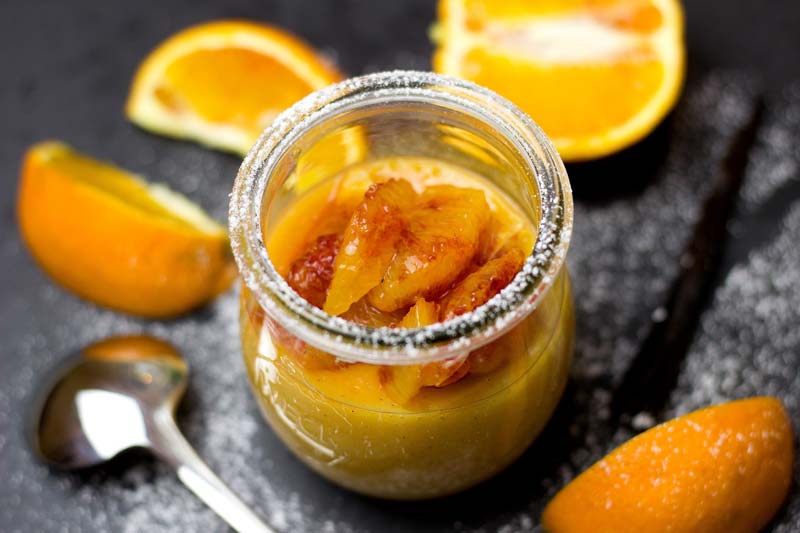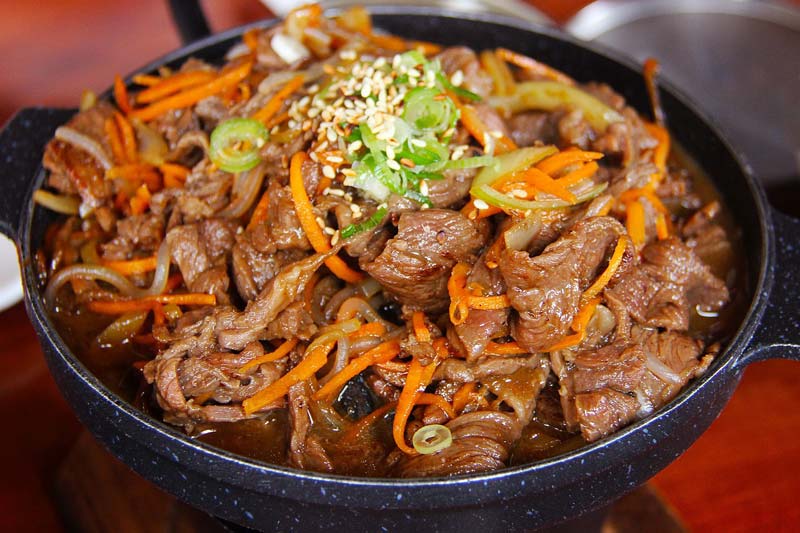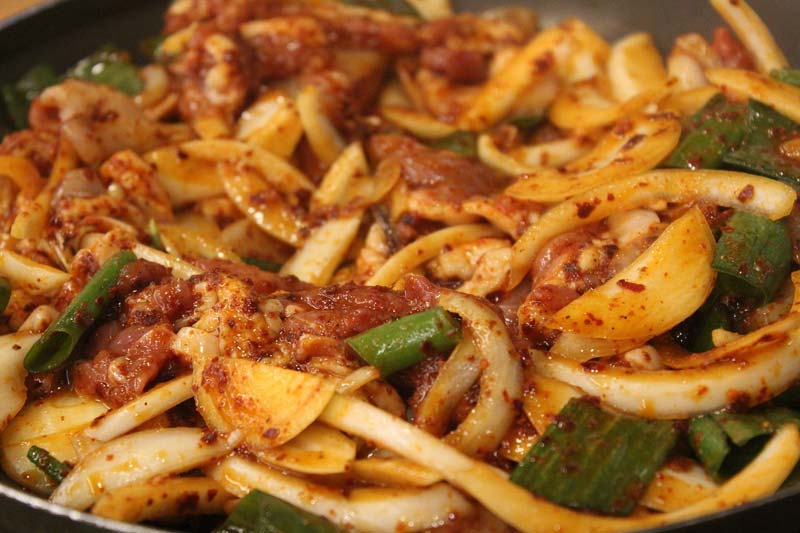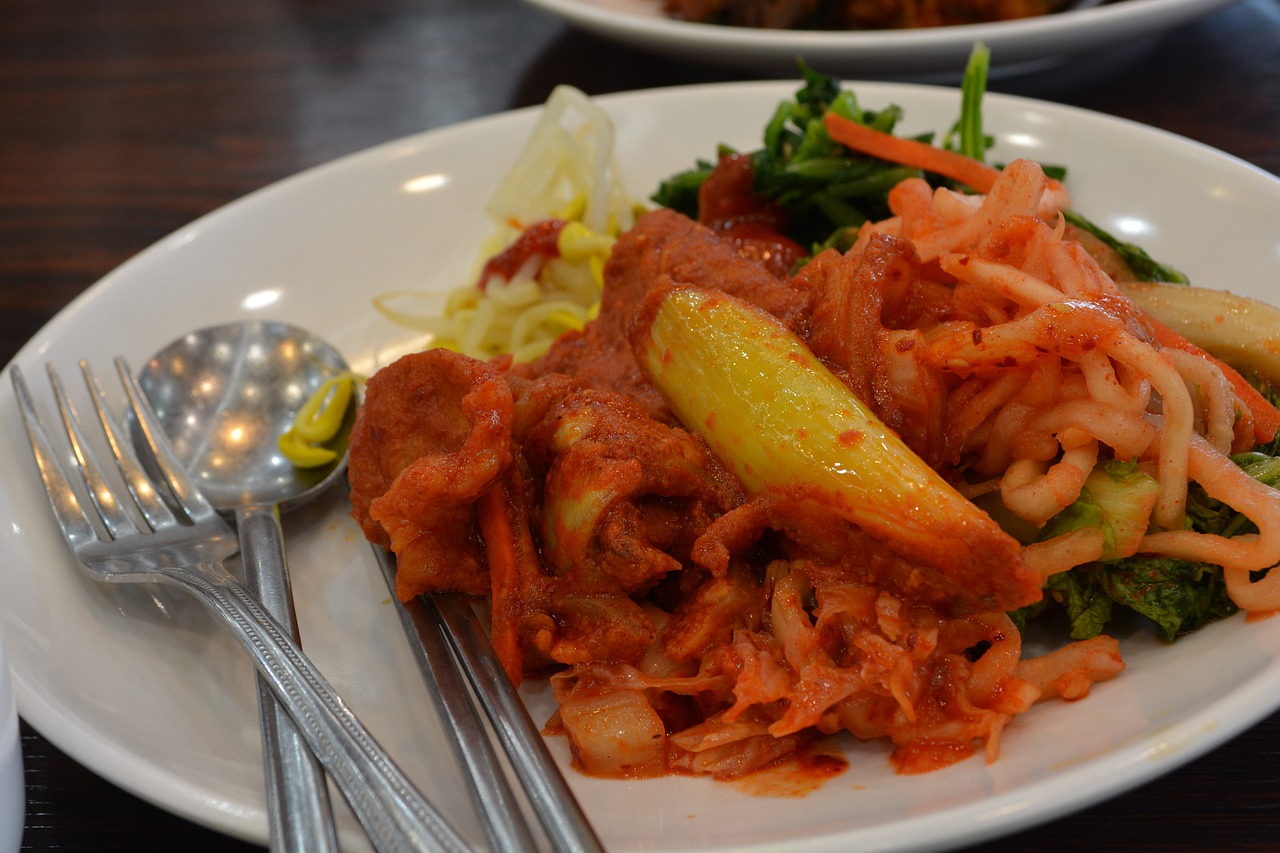What is Soybean source?
Encyclopedic Definition : A liquid sauce made from soybeans fermented and steeped in brine.
Soybean sauce (korean name : ganjang) is a solution extracted from the mixture of “meju” (fermented soybeans), water, and salt.
Completely boiled soybeans are kept in their original shape or in rectangular lumps until they are fermented by fungi and enzymes growing naturally in soybeans. Dried meju lumps are crushed into fine pieces and steeped in brine until they are further fermented and matured. The liquid is separated from the solid.
The liquid is called soybean sauce, while the solid is called soybean paste. The liquid and the solid are preserved until they are matured further. They are Korea’s traditional soybean-fermented foods that are used as seasonings.
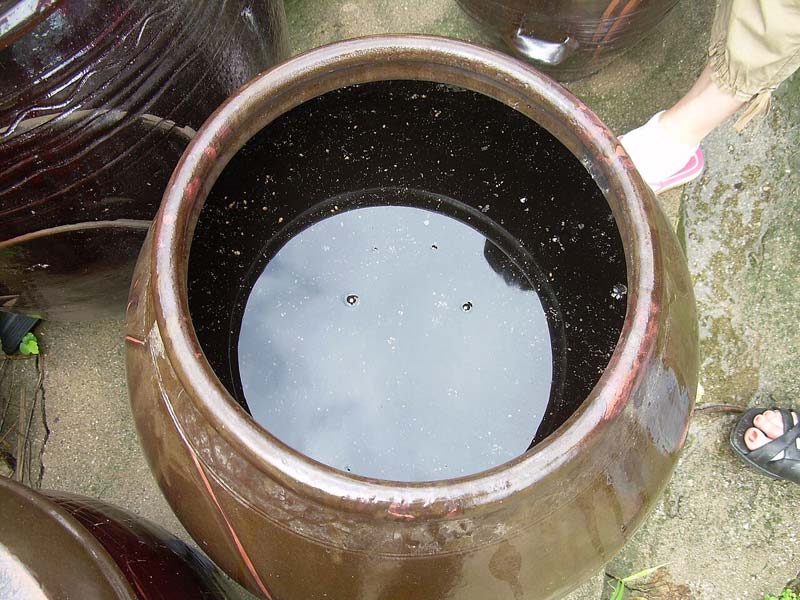
Traditionally Korean soy sauce was produced at home in earthen jars, fot. 570cjk
Soybean sauce is a fermented food made from soybeans rich in protein and amino acids. It was developed to meet the need for foodstuffs as meat was prohibited after Buddhism spread throughout Korea.
It provides rich protein and can be kept for a long period of time. Indeed, it is a scientific food carrying the wisdom of Korean ancestors.
History
Many Korean people believed that poor tasting soybean sauce would bring about great disasters in the year. Therefore, making soybean sauce has been one of the largest annual events for Korean women. People judge the culinary skill of a homemaker by the taste of the soybean sauce they make. “Kan” in Kanjang (a Korean term for soybean sauce) means “salty.”
Soybean sauce is referred to as “Jiryeong” in “Gyuhabchongseo” (a book about housekeeping, including cooking), and was called “Jireom” in Seoul. However, the origin of this term has not been known. It has been used together with “Kanjang,” an old word for Soybean sauce found in “Hunmongjahoe.”
Today, traditional Korean soybean sauce is made by steeping meju (fermented soybean) lumps in brine until the liquid is fermented. Imwonsibyukji (a culinary book written in 1827), however, states that in addition to soybeans, carbohydrate-containing grains like wheat, barley, and buckwheat were used as well in making soybean sauce.
The book also mentions 20 kinds of soybean sauces and 12 kinds of “shi” (fermented soybeans), implying that soybeans were fermented in powder or lumps by the end of the Joseon Dynasty.
It is not clear when and why Koreans began to ferment soybeans only in lumps.
Gyuhapchongseo(1869), written in the later part of Joseon Dynasty, records how to make soybean sauce in detail, the characteristics of good meju, when to make soybean sauce, and how to make brine.
According to this book, the desirable maturation period of soybean sauce is 60-100 days.
(fermentfood/fermentfood2_3_a.jsp)

